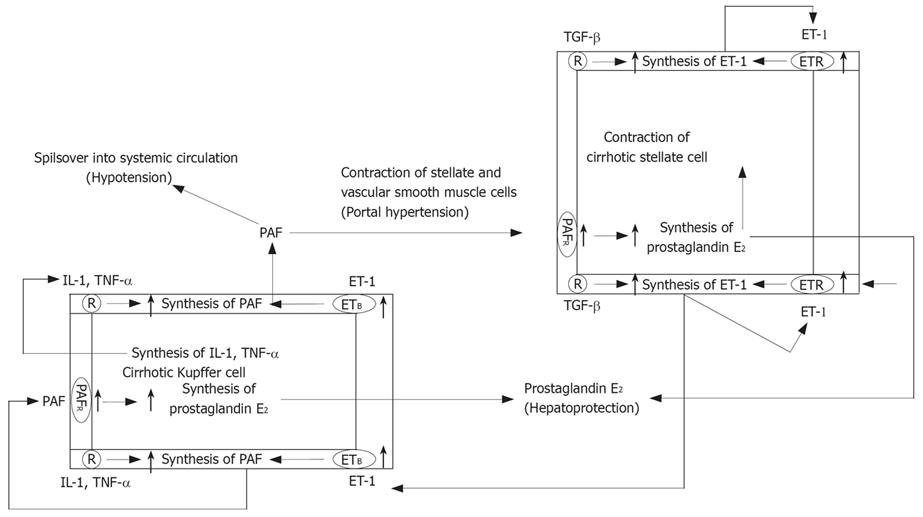Copyright
©2008 The WJG Press and Baishideng.
World J Gastroenterol. Jan 14, 2008; 14(2): 218-223
Published online Jan 14, 2008. doi: 10.3748/wjg.14.218
Published online Jan 14, 2008. doi: 10.3748/wjg.14.218
Figure 6 Implication of platelate-activating factor, ET-1, Kupffer cells and hepatic stellates cells in the pathology of liver cirrhosis.
Increased ET-1 released by stellates and endothelial cells in the cirrhosis liver acts on upregulated ETB receptors in Kupffer cells and stimulates the synthesis of PAF. Likewise, autocrine actions of proinflammatory mediator such as IL-1 and TNF-α may also stimulate PAF synthesis by Kupffer cells. PAF then acts on hepatic vascular smooth muscle cells and stellate cells and contributes to portal hypertension by causing their contraction. Its spillover into systemic circulation is likely a cause of hypertension associated with cirrhosis. Autocrine PAF and paracrine ET-1 can act on their respective upregulated receptors in Kupffer cells and stellate cells to cause the synthesis and release of prostaglandin E2, which in turn may act to limit the liver injury.
- Citation: Chen Y, Wang CP, Lu YY, Zhou L, Su SH, Jia HJ, Feng YY, Yang YP. Hepatic stellate cells may be potential effectors of platelet activating factor induced portal hypertension. World J Gastroenterol 2008; 14(2): 218-223
- URL: https://www.wjgnet.com/1007-9327/full/v14/i2/218.htm
- DOI: https://dx.doi.org/10.3748/wjg.14.218









